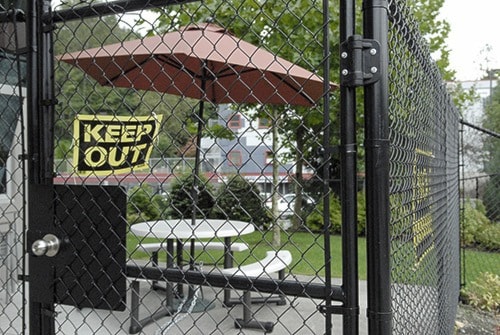For Gordon Paterson, the discovery of a homemade toilet outside his place of work was just another frustration in a series of issues while dealing with the homeless residents who congregate on Gladys Avenue.
The business, which he did not wish to identify, is located near the Salvation Army on Gladys Avenue, which brings in street-involved people each day to access services, as well as the homeless people who have made their camp across the street.
Paterson said he and other staff members deal with such issues often – and the latest unpleasant problem has staff dreading the clean-up.
“I didn’t want (dealing with the homeless) to become part of my job, but it’s sort of become that.”
The Salvation Army has facilities available for homeless residents during the day, but Deb Lowell, public relations director of the Salvation Army, said they do not have the staff to monitor the area through the middle of the night.
Paterson said the business has spent thousands of dollars to put up fences and security cameras to deal with people camping on their property, and he remains in regular contact with the Abbotsford police to help move people along.
Yet Paterson says he’s not insensitive to the issues faced by the homeless.
When the business first moved into its location three years ago, a homeless man was living near the building. Staff of the business introduced themselves to Robert, and got to know him. Paterson said they eventually bought a shed for Robert to live in nearby, but following a complaint by a citizen, he was moved out because the arrangement contravened city bylaws.
Paterson said they convinced Robert to move into a basement suite in the home of a staff member, gave him a job at the business and bought him a puppy – as Robert said he couldn’t live without having a dog for a pet. But the arrangement quickly fell through as Robert stopped following the rules they had set out.
For Paterson, it was a disappointment.
“We tried to do some good, but it didn’t work.”
Since then, the problems have continued, with people frequently trying to set up camp on the property.
He said he’s concerned that some homeless people just don’t want to be housed, but added that he would like for them to have a place to go, for shelter or help.
“I kind of wish they never closed down Riverview (mental health facility in Coquitlam), or they could build some sort of facility like that again,” he said.
“I’m not sure if that’s the answer, I don’t know what the answer is. But having to deal with this on a daily basis … it’s tough.”
John Turnquist lives on Roberts Avenue, near Ravine Park, and also deals with the impact of homeless or street-involved people. He’s been there for 17 years, and noted that homelessness has been apparent in the downtown for many years, shifting from areas such as Jubilee Park and Braun Avenue.
But with changes in the downtown core, including building developments and the movement of services, the issue has relocated – on occasion – directly to his doorstep and in his backyard.
He is concerned about ever being able to sell his home, as “property owners don’t want drugs in their neighbourhood.”
Turnquist said he has found evidence of drug use on his property, including used needles, drug paraphernalia and garbage. He has encountered a young couple sleeping in the entry of his building, using a plug-in to charge their cellphone. He has repeatedly asked people to leave the private property, and said the interactions have occasionally become confrontational.
“I just don’t know what I’m going to encounter.”
He said he has called police, who are always understanding but don’t seem to be able to do much other than move people along and the problems reoccur.
Turnquist said he is concerned about society’s “ambivalent attitude towards drugs,” and the often glamorous representations of drug abuse in the media. Turnquist said he feels society has a job to intervene on behalf of people who can’t help themselves, like drug addicts, and bring people to treatment. He wants to see as many people brought back into society in the long-term, but is unsure of how to ensure that happens.
Turnquist said the answer could be ensuring people accept treatment, as drug users may not be able to make decisions for themselves. He said if laws do not currently allow people to be put into treatment against their will, then perhaps the laws should be changed.
“Laws need to be in a position to work in the best interest of these people – because they don’t work in the interest of themselves.”
He said Abbotsford authorities hesitated in dealing with the root causes of the issues of drug abuse and homelessness, and made “the mistake of not dealing with it when it was a little problem.”
Now, Turnquist said it is time to find a solution before things get worse.
